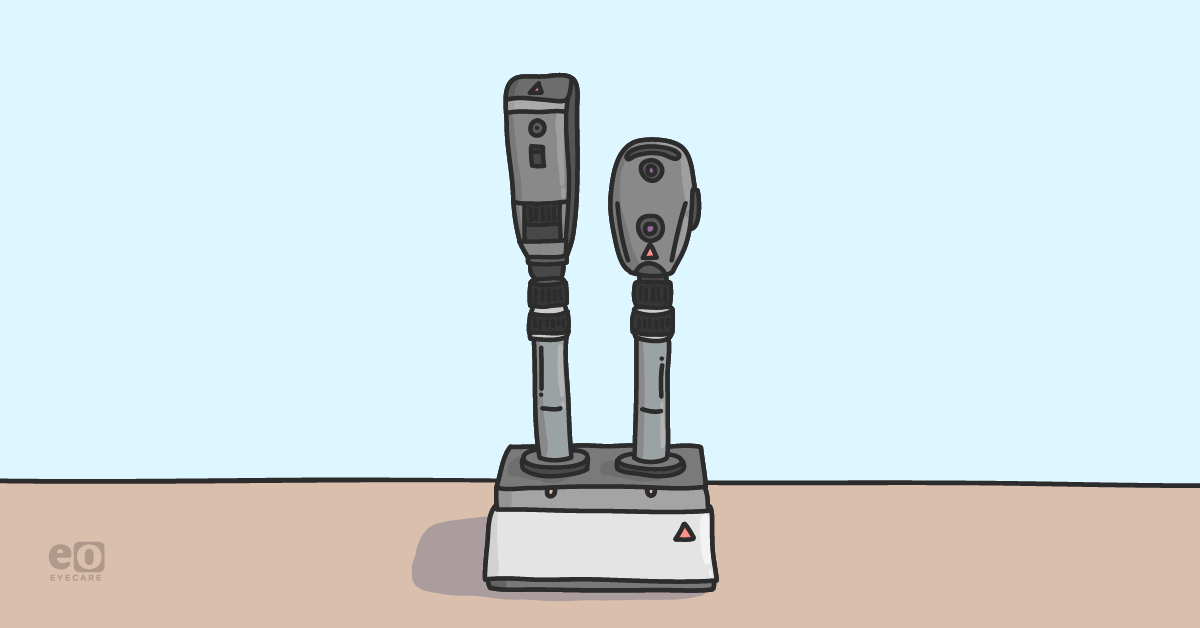As the adventure of optometry school begins to unfold, first-year students are quickly thrown into a new routine of attending lectures, labs, studying, and meeting new life-long friends and colleagues. As doctors-in-training, first-year students will also be required to purchase various ophthalmic equipment, including a diagnostic kit. A diagnostic kit typically includes:
- A retinoscope
- An ophthalmoscope
- A transilluminator
- A charging station
These are integral tools for
delivering eye care in the clinic and beyond. In this article, we’ll review the common brands available and some factors to consider when purchasing a diagnostic kit as a first-year optometry student.
What brands of diagnostic kits are there?
The most common diagnostic kit brands available to are
Welch Allyn,
Keeler, and
Heine. Despite rumors or anecdotes that one brand may be superior, it is important to do your own research! Your trusty diagnostic kit will be with you throughout your career, helping you to successfully perform a thorough eye exam regardless of which brand you ultimately choose.
Welch Allyn
Cost range: $1300 to $1700 for a full kit
Medical innovator Welch Allyn was founded over a century ago. In 1915, Dr. Francis Welch and William Noah Allyn developed the world's first handheld, direct illuminating ophthalmoscope and established the company shortly thereafter.
The Welch Allyn PanOptic ophthalmoscope. Image via Welch Allyn
In addition to your conventional transilluminator, retinoscope, and ophthalmoscope, Welch Allyn also offers one of the only PanOptic ophthalmoscopes. This “super” ophthalmoscope enables easier entry into the eye, and a 5x greater field of view of the fundus for undilated retinal exams. Digital fundus photography is also possible with the PanOptic ophthalmoscope as well.
As our readers told us about their Welch Allyn purchase:
“Welch Allyn has been great—no complaints. The PanOptic is great too!”
“Budget-friendly, trusted medical equipment company for 100 years. Works perf!”
“Durable if dropped (I'm clumsy), lightweight, high quality!”
Keeler
The UK based company Keeler has been manufacturing ophthalmic instruments for over a century. A unique feature to Keeler’s diagnostic kit is their ophthalmoscope which includes a unique auxiliary lens to toggle +/- 20D to 30D in one click (depending on model). This helps to facilitate ophthalmoscopy in patients with higher refractive errors. Each ophthalmoscope has also been designed with curved surfaces to fit snugly into the orbital bone. Unlike other straightsided brands, the contoured, curved ophthalmoscope head guarantees an optimal viewing angle and larger field of view. Keeler’s retinoscope also features an optional attachment for spectacle lens wear, facilitating retinoscopy for doctors who wear glasses. Keeler instruments also tend to be “lighter-weight” when compared to other brands.
Fig 1. The optimized curvature of Keeler’s ophthalmoscope can be seen (left image, left side) as compared to the conventional shape of other ophthalmoscopes (Heine, shown right in both images). Also note the auxiliary +/- 20 diopter auxiliary lens toggle on the Keeler ophthalmoscope head (right image, left side).
Fig 2. Keeler retinoscope shown with optional attachment for spectacle lens wear. This feature ensures the retinoscope does not make direct contact with the examiner’s glasses, improving alignment between the patient and examiner.
As our readers noted on their purchase choice:
“I bought the Keeler set because it felt like a good fit for my small hands—not too heavy.”
“I tried them all and I really liked that I could reach the axis knob with my short fingers with Keeler!”
“Great optics and it felt good in my hands.”
Heine
Cost Range: $1150 - $1600
German-based company Heine has been developing and manufacturing ophthalmic instruments since 1946. In addition to their high-quality ophthalmoscope and retinoscope, Heine’s transilluminator features a unique detachable cobalt blue filter to help facilitate fluorescein examinations (in the absence of a slit lamp). Newer model Heine handles also have a flashing red light at the bottom of the handle to alert the user when power levels are low. Heine also participates in various humanitarian and social outreach programs and
actively donates ophthalmic equipment to these causes. Despite a slightly higher price tag (~$1150), the majority of today’s optometry students opt to purchase the Heine diagnostic kit.
When asked why they chose Heine, our readers had this to say:
“Durability and warranty!”
“Quality”
“LOVE the quality of the kit as well as the feeling while holding it. Felt strong, durable & perfect.”
Based on a recent CovalentCareers’ survey of over 1450 current optometry students, 60% of respondents chose Heine for their diagnostic kit brand, while approximately 22% chose Welch Allyn and 17% chose Keeler. The majority of students also reported spending over $1,000 for their diagnostic kit.
A diagnostic set is going to be expensive, but it's a purchase that will last well beyond your grad school days.
Which diagnostic set should you purchase?
Depending on your
optometry school, you might be offered a limited choice of brands if you choose to purchase a diagnostic kit through your school. However, before making a definitive decision on which diagnostic kit to purchase, consider all of the potential places you will take it throughout your academic and professional career. From various clinic and office settings, to domestic outreach events, or even on international humanitarian work.
- Is the case excessively large for travel purposes?
- How easy is it to charge the handles?
Most brands do feature separate bottom caps for their handles, enabling universal stand port charging in most exam room settings. Additional AC bottom cap adapters also exist for charging handles directly via wall outlets. This can be a valuable feature for traveling with your kit, and eliminates the need for an additional charging station. Some brands even offer USB handle charging capabilities as well.
Fig 3. Numerous charging options exist for today’s diagnostic kits. Shown here is the Heine charging station with optional AC adapter for charging handles directly via the wall outlet.
